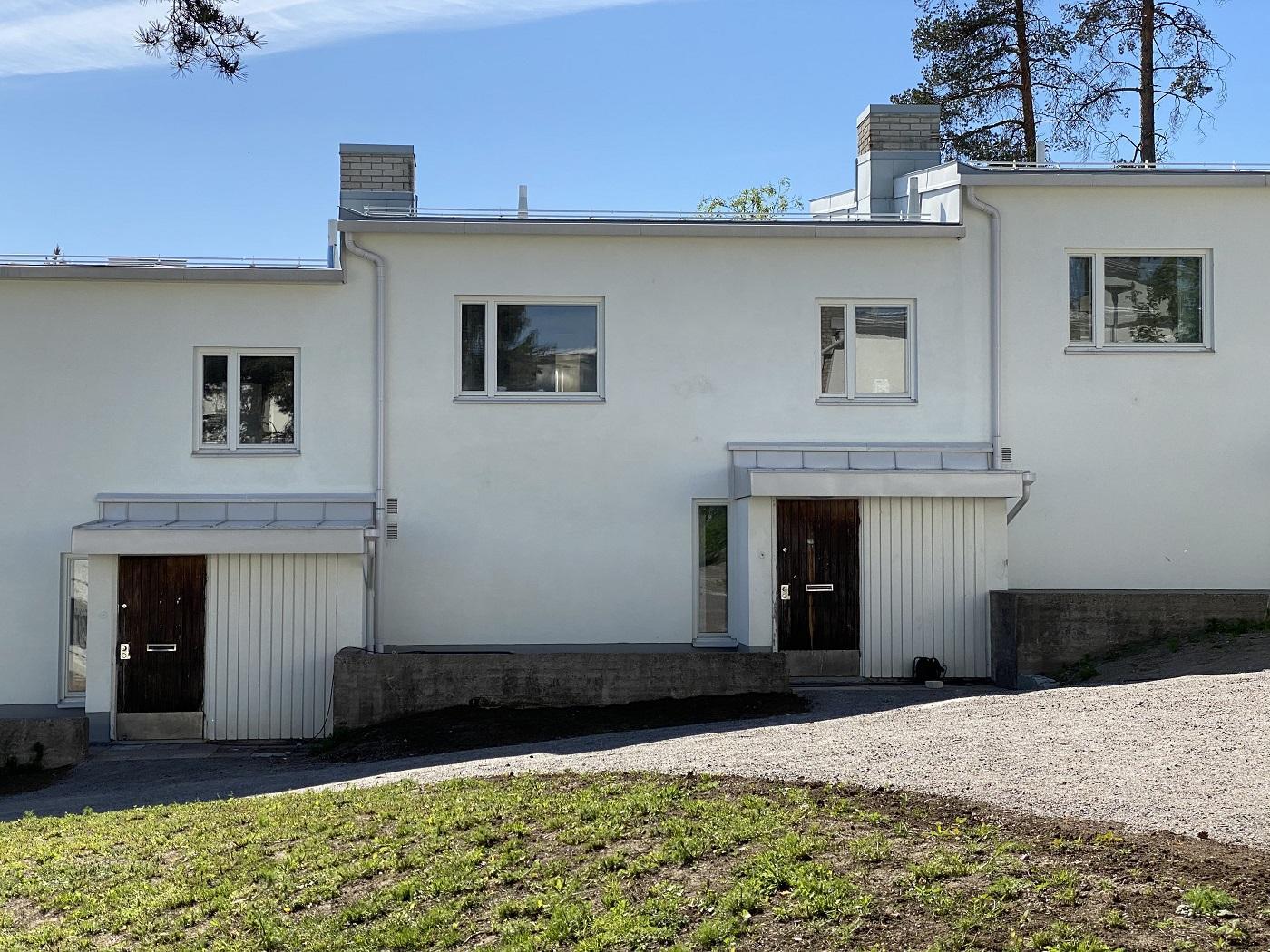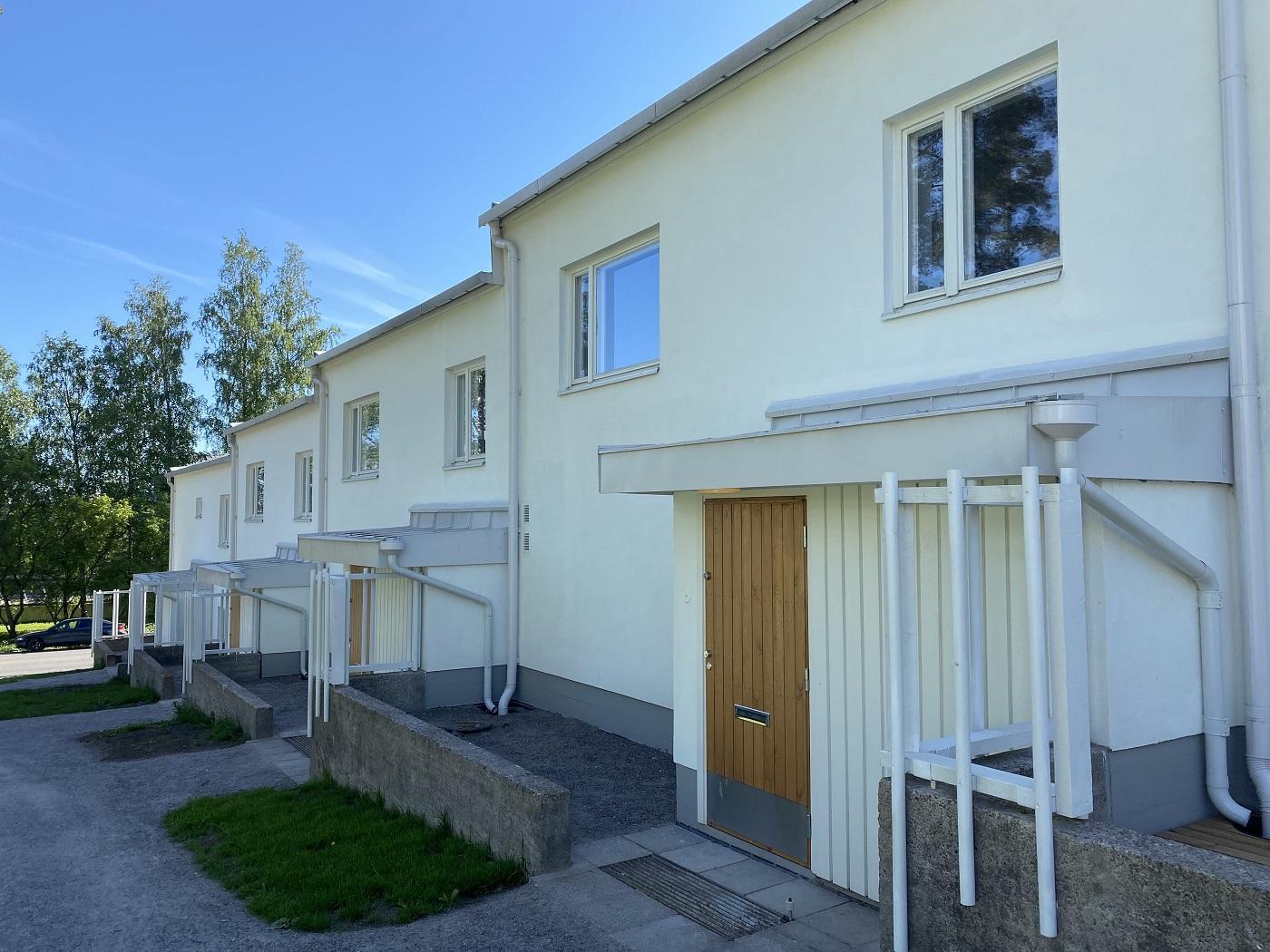
During this day tour you will learn about the history of Finnish aviation and get to admire a special Aalto destination in Vantaa. The Aviation Museum offers a lot to see and experience for both aviation enthusiasts and novices, and is ideal for a family trip. The museum displays approximately 70 aircrafts from different eras, as well as many other aviation-related artefacts such as engines and scale models. Visitors can get acquainted with travel, hobby and military Finnish aviation by touring the two large permanent exhibition halls and a third hall for changing exhibitions.
The architecturally significant terraced house complex Aerola, designed by Alvar Aalto, is also located in Vantaa, within the Veromies neighbourhood, and it is strongly linked to the history of the Helsinki-Vantaa Airport. The terraced houses were designed as apartments for the employees of Finnair’s predecessor Aero Oy, and they were built on Pyhtäänkorventie street during 1953–1955. Aerola’s terraced houses are also the only buildings designed by Aalto that are situated in Vantaa, and they are a valuable part of the city’s cultural heritage.

When Finland was selected to host the 1952 Summer Olympics, it also contributed to the construction of the current Helsinki-Vantaa Airport. Scheduled air traffic in Finland had also grown rapidly at the turn of the 1940s and 1950s. Malmi Airport, which had been completed in 1936, was no longer able to meet the growing demand, and a decision was taken to build a new airport. The Helsinki-Vantaa Airport (1952) was completed just a little over a month before the start of the Olympics, and soon afterwards Alvar Aalto’s Architect Office was commissioned to design employment housing for the staff of Finnair’s predecessor Aero Oy in proximity to the new airport.
In early drafts from 1952, the terraced houses of Aerola were originally placed right next to the brand new airport. Later, in 1953, the site for the new residential area was relocated to its current location, a little further from the airport. Aerola’s terraced house complex consists of two identical 2-storey terraced houses stepping on a slope, each comprising 20 apartments of different sizes.
Entrances open on both sides: the west side gives access to the studios and one three-room apartment located on the south end of the building, while the three-room and one four-room apartments, which develop on two floors, have entrances on the east side. Each apartment has an independent entrance fronting onto a small courtyard area. The garages are located at the end of the buildings, and the basements include separate storage rooms for all of the dwellings. In the middle of the plot, between the two rows of houses, stands an L-shaped building that houses the sauna, laundry room and heating centre.
This whitewashed building complex was constructed between 1953-55, originally planned as part of a larger entity, which also included four apartment buildings and a few detached houses. After the first phase consisting of the terraced houses and the sauna and laundry building, however, the project was not developed further, and a vocational school was later built on the site.
Aerola’s terraced houses complex is an important historical entity within the city of Vantaa. In order to protect it, the city even altered an originally approved redevelopment plan in 2008. In addition, some elements of the interiors of the apartments are also protected by law. The year 2018 saw the beginning of renovation works in Aerola under plans made by the architectural firm A-Konsultit in connection with the Vantaa City Museum and the Alvar Aalto Foundation. Renovation of the first terraced house was completed in the spring of 2020 and renovations of the second house have since begun.

